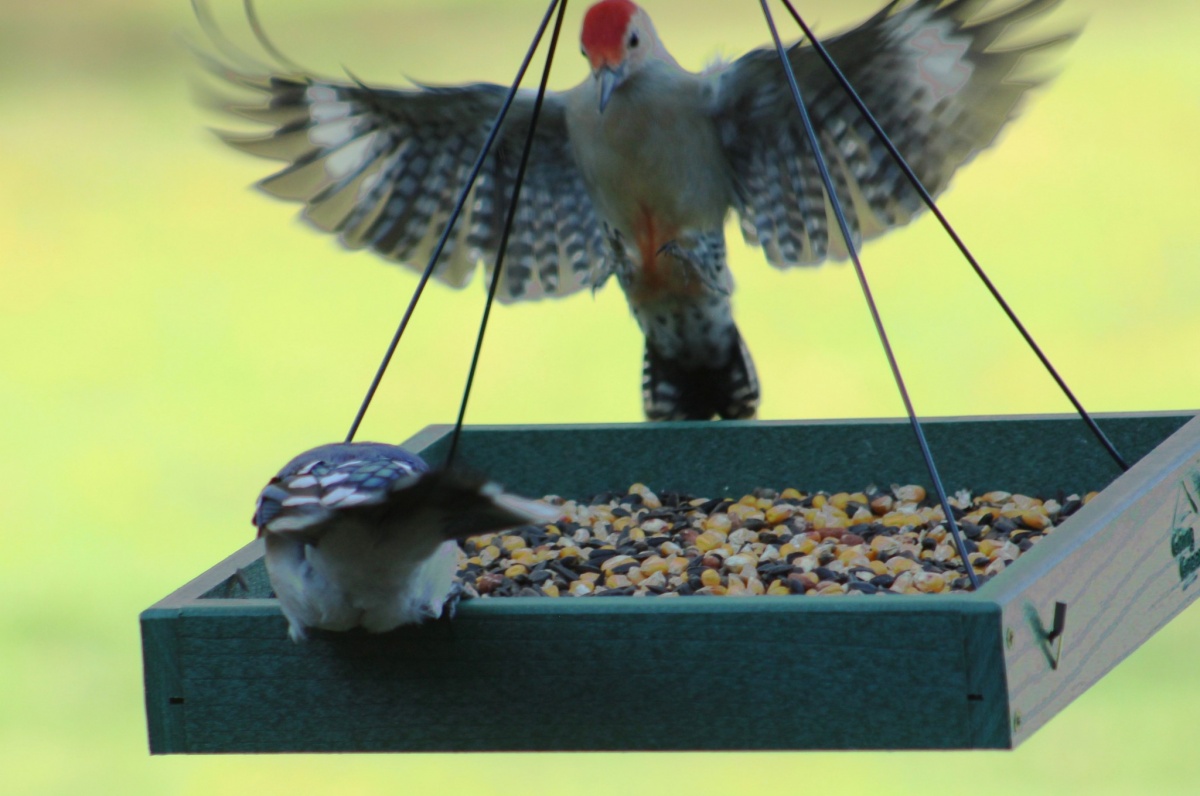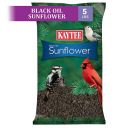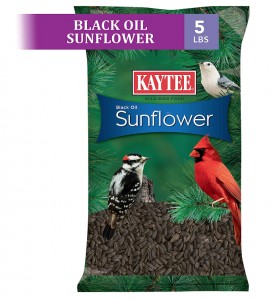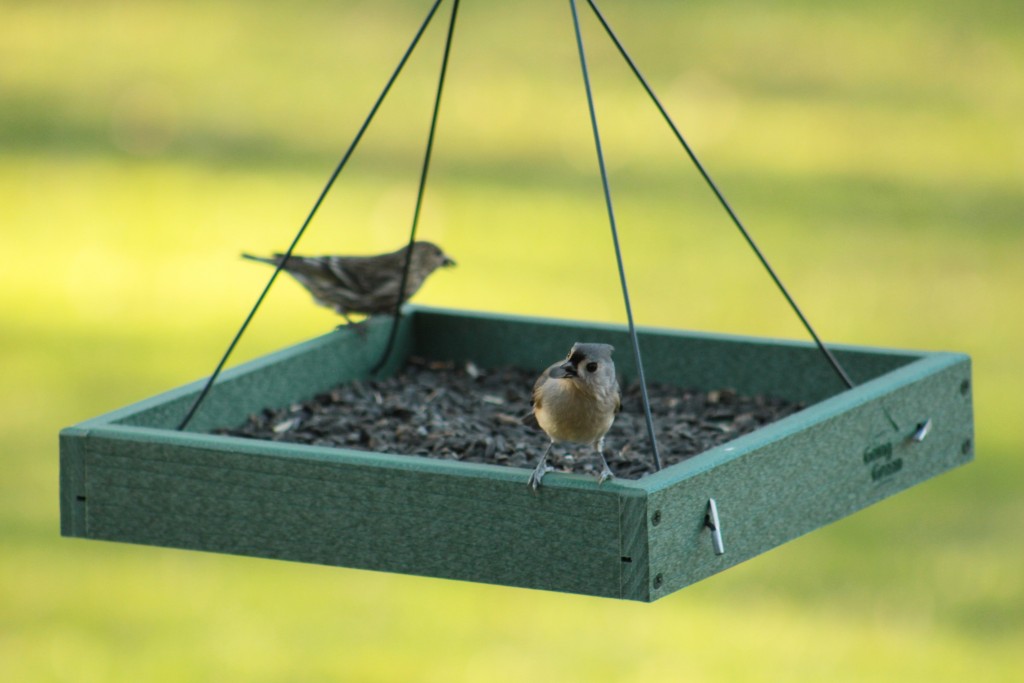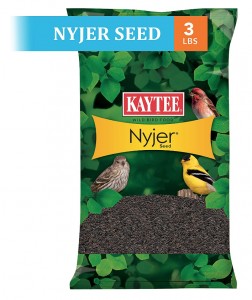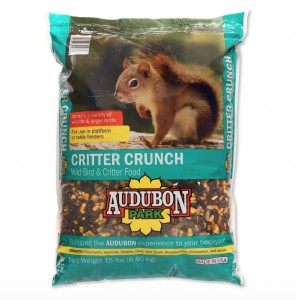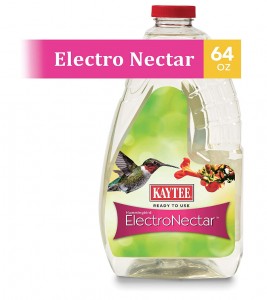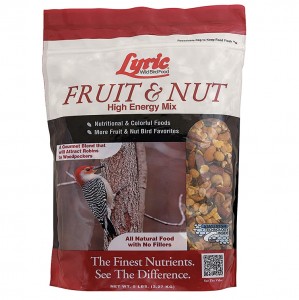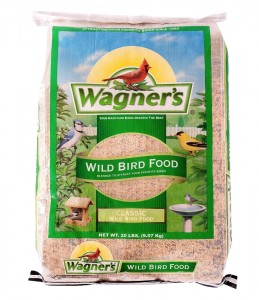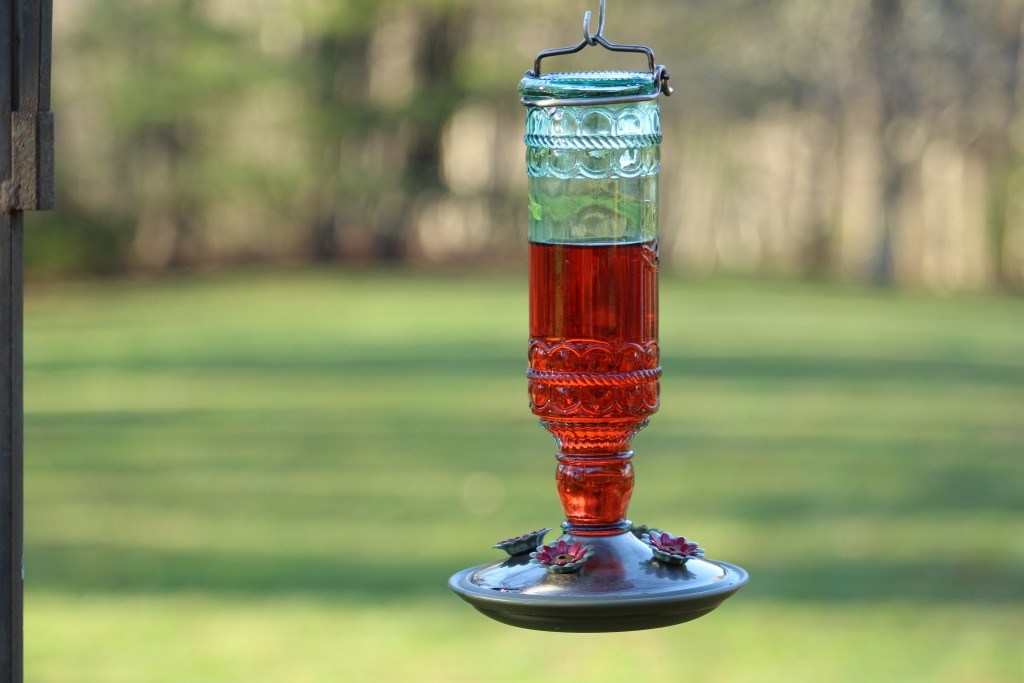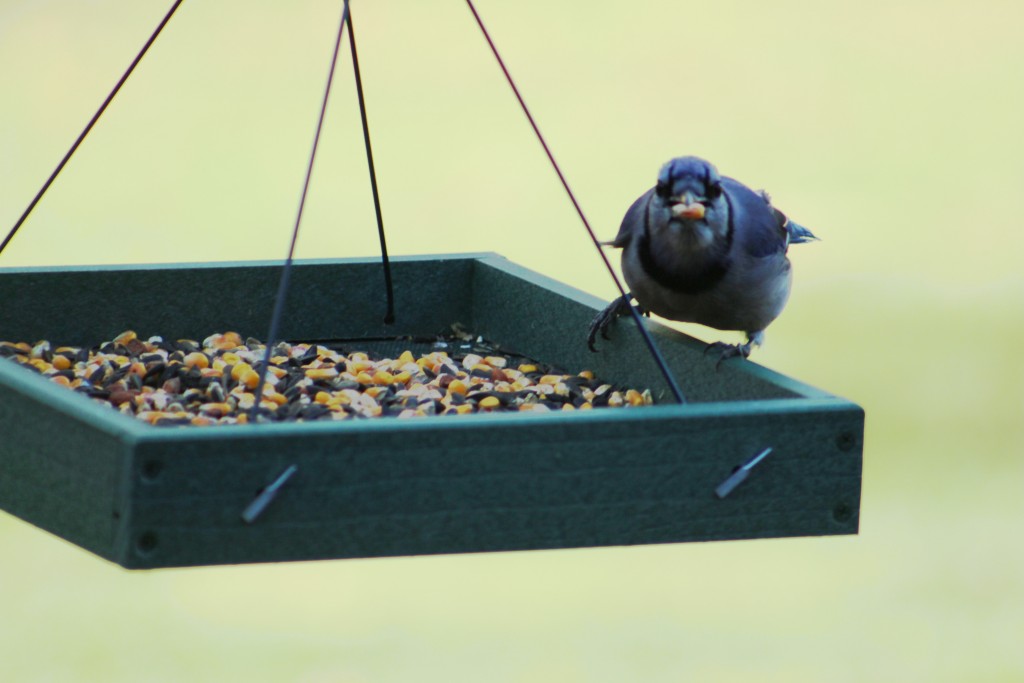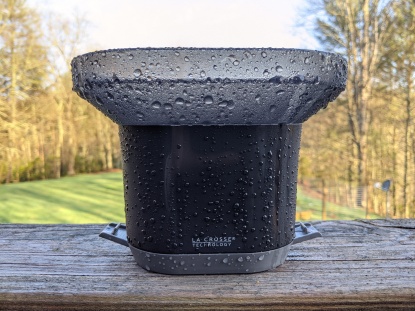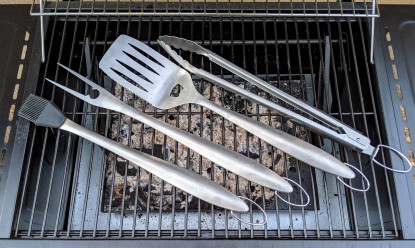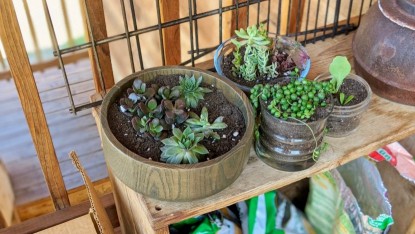Trying to make more feathered friends? We researched over 25 bird seed options before buying and testing the best 8 mixtures side-by-side. Our lawn and garden experts sorted through the seeds to check their quality and weighed each feeder before and after hanging them every day to track which seeds the birds preferred. We also did our research to capture information about birds outside of our range and study season, too. Whether you want to give migratory species a place to rest and recharge, keep hummingbirds humming along all summer, or help overwintering birds make it through the cold months, we have a recommendation for you.
Our home & garden experts are here to help you spruce up your backyard. Whether you're looking for the best charcoal grill or want to plant your own garden, we have the round-ups and in-depth reviews to help you pick the best products for your own yard. Of course, you'll want one of the best bird feeders on the market to go along with a bag of seed.Our Top Picks
According to The National Audubon Society, black oil sunflower seeds appeal to more birds than any other type. Our testing confirmed the preference, with more of the Kaytee Wild Bird Food Black Oil Sunflower seeds disappearing than any other kind each day. These seeds are high in fat content and have thin enough shells for almost any seed-eating bird to crack (striped sunflower seeds are bigger and tougher to break). They also generate little to no waste below the bird feeder since the birds don't have to cherry-pick their favorite options from a mix of food types. Since the birds eat nearly every seed, you get a lot of value per pound.
Bird Species: Chickadees, titmice, nuthatches, finches, cardinals, grosbeaks, sparrows, blackbirds, jays, woodpeckers, pigeons, doves, indigo buntings
The only waste these sunflower seeds produce is the split and empty shells. If they're falling into your yard, you probably won't notice, but if you're feeding birds on a deck, you may have to sweep up empty shells. Again, you probably will generate less debris than the discarded extras from the blended options. The Kaytee seeds weighed in at the claimed five pounds with minimal empty shells and a few small sticks. If you want a bird seed that allows you to easily clean your feeder and keep the seed-eating birds well-fed, this is the one!
Only the Kaytee Nyjer Thistle Seed gave the sunflower seeds a run for their money in popularity. Though fewer birds prefer them, the seeds quickly disappeared thanks to an abundance of finches on our property. Nyjer is not technically a thistle. Since many American thistle species are invasive, bird lovers switched to a daisy-like plant from Africa, the nyjer (Guizotia abyssinica). The small, thin seeds are oily, rich in nutrients, and heat-sterilized to make sure they don't sprout, according to The Cornell Lab. They require specific feeders with mesh fine enough to hold the seeds but large enough for perching birds like finches, siskins, and indigo buntings to pull them through. The result is a feeder that birds cling to, often upside down, providing lively feeding conditions for flocks of siskins. And, squirrels aren't that fond of nyjer seed, so it's a good choice if you have lots of fluffy-tailed visitors.
Bird Species: Mostly goldfinches, house, and purple finches, pine siskins, redpolls, indigo buntings; Some song sparrows, dark-eyed juncos, white-throated sparrows, doves, chickadees
Because birds enjoy nyjer seeds most when they're fresh and oily, they are often sold in smaller quantities to prevent drying out. They're also more expensive than many other bird seed options, but since the birds love the seeds and there are no fillers, very few seeds go to waste. Though some may spill out when filling your feeder, ground feeders like doves may keep them from going to waste. However, most of the debris you see on the ground is just empty shells. If you're a finch fan, nyjer seeds are a great choice. We prefer to have a feeder full of black oil sunflower and another nyjer feeder out at all times for all kinds of lively bird watching.
We tested Audubon Park Critter Crunch in its bird feeding capacity. Though this mix of corn, black oil sunflower seeds, peanuts, and whole peanuts is marketed as feed for furry friends like squirrels and deer, many experts advise against feeding non-feathered wildlife. And corn can actually harm deer. Some folks do feed squirrels and chipmunks to keep them out of dedicated bird feeders, but the practice is fraught with controversy and is especially ill-advised in urban areas. But the birds like it, judging by the amount consumed during our testing period. Many birds love that this mix is packed with crowd-pleasing black oil sunflower seeds. We enjoyed watching the blue jays and red-bellied woodpeckers snatch up the peanuts and even spied a Tufted titmouse and chickadee or two, flitting away with them. Black sunflower seeds are efficient. This colorful birdseed is fun.
Species: Jays, quail, woodpeckers, chickadees, and titmice; Also chipmunks, squirrels, rabbits, deer
While jays, blackbirds, sparrows, pigeons, and doves will eat the corn, they leave it for last. The sunflower seeds are popular with everyone. This seed mix is meant to be served on a platform feeder due to the bulky peanuts and corn and the larger bird species they attract. Tube feeders with large openings will suffice, but the platforms provide better bird-watching opportunities. This mix offers a reasonable value, but the caveat is that you'll probably be left with some wasted seed corn, which gets soggy and mushy when wet and will make your feeder more difficult to clean. Straight sunflower seeds are easier and more cost-effective. But if you really love jays and woodpeckers and have a platform feeder, we say go for it.
The Kaytee Ready to Use Hummingbird ElectroNectar makes it exceptionally easy to fill your feeder. Just shake it up, pop the top off, and pour it in. The ruby-throated hummingbirds who tried it during testing seemed quite satisfied, and we really appreciate that this hummingbird nectar is clear. Experts, including those at the Cornell Lab, recommend avoiding red coloring since the dye could harm them. What is a little less clear is whether or not the electrolyte additives are needed. While hummingbirds do need electrolytes, they also get them from the flower nectar and bugs that they forage for, and Cornell and the Smithsonian recommended mixing one part granular sugar with four parts water to make your nectar, and that's it. This mix adds citric acid, sodium bicarbonate, potassium bicarbonate, and potassium sorbate (as a preservative).
Bird Species: Ruby-throated, black-chinned, rufous, and Anna's hummingbirds
The Ready to Use nectar will cost you over time. Though Kaytee makes a more economical concentrated option, buying the nectar is still more expensive than making your own. You're also using more resources by purchasing a plastic bottle and paying for all the transportation it takes to get the nectar from the factory to you. If you don't make your own, this is our favorite choice for hummingbirds.
To Feed or Not to Feed?
Hummingbird feeders are a popular option among birders and home gardeners alike. But are they safe for the birds? If you plan on hanging a feeder in your backyard, it's important to understand that there are risks associated with offering hummingbirds sugar water. You have a responsibility to regularly clean the feeder to prevent fungal infection and understand that feeding non-migratory hummingbirds through the winter takes a full commitment.
The Lyric Fruit and Nut High Energy mix of peanuts, almonds, pecans, cashews, pistachios, cranberries, raisins, sunflower seeds, pumpkin seeds, and steamed crimped corn look good enough to eat. Lyric claims that non-seed-eating species like cedar waxwings and orioles that rarely visit bird feeders will appreciate the mix. Sources like Cornell suggest offering fresh fruit to draw in such birds or to rehydrate dried fruits in water. So, we wondered how popular the dried fruit would be in our tests. Audubon notes that dried fruit and nut mixes appeal to titmice, woodpeckers, and nuthatches, which we have plenty of. While we didn't catch any selecting a piece of fruit, it was disappearing from the platform feeder by the end of the testing period.
Species: Chickadees, robins, blue jays, titmice, orioles, buntings, cardinals, grosbeaks, towhees, nuthatches, and cedar waxwings
While the birds liked the sunflower seeds and grabbed peanuts, the rest of the mix piled up at times and made for messier leftovers when it rained on exposed fruit. Keeping your bird seed dry and mold-free is important to protect the health of your flock. There's no question that this is high-quality, nutrient-dense food; we're just not sure how long you'll have to offer it before you start drawing in the birds it's meant for. We're willing to have this mix around to occasionally glitz things up for them. Perhaps set it out for spring migration with half an orange to see if you can call in an oriole.
Wagner's Safflower seeds are reasonably priced and free of debris and shed shells. While most birds don't love safflower seed, cardinals can be fond of them according to the folks at The Cornell Lab. Some others—grosbeaks, doves, chickadees, and sparrows—eat it, but they prefer sunflowers or nyjer seeds. We caught pine siskins munching on it, but they ate less than the other options. The main benefit of the safflower is that squirrels don't like it that much either. (Though there are rumors that some start to enjoy it over time.) Though nutritious, the seed tastes bitter, so you may have to mix it with tastier options like sunflower seeds until your birds get used to it.
Species: Cardinals and less frequently grosbeaks, chickadees, titmice, nuthatches, finches, doves, white-throated sparrows
The seeds are thick and hard to crack, which makes them harder for many birds to eat. Whereas seed mixes leave the less popular options behind to mildew, safflower seeds move more slowly overall, putting them at higher risk for spoiling if you set too many out at a time. Since cardinals and grosbeaks prefer tray feeders, that's your best bet for selling them your safflower seeds. If you're in a battle royale with the furry little guys, it could make sense to put out seed that they'll shun long enough for the birds to eat it, even if it isn't their favorite option.
The Wagner's Classic Blend of sunflower seeds, white proso millet, cracked corn, and milo did not shine in our Blue Ridge Mountain-based preference tests. The birds snatched the sunflower seeds and some white millet, largely leaving the cracked corn and milo behind. The majority of the mix is red milo seeds, which a lot of birds ignore. Pigeons, doves, and jays will eat it on occasion, but it's most popular with western ground-feeders like Steller's jays, Gambel's Quails, and Curve-billed Thrashers (Cornell again). Jays, pigeons, doves, blackbirds, finches, and sparrows will eat the cracked corn, but they don't prefer it.
Bird Species: Chickadees, titmice, nuthatches, finches, cardinals, grosbeaks, sparrows, blackbirds, jays, woodpeckers, pigeons, doves, Curve-billed Thrashers, and Gambel's Quails
As the milo and corn pile up in your feeder, it threatens to foster mold, which is bad news for birds. Experts recommend cleaning your feeder at least once every two weeks, but you may have to do so more often with this mix to keep less popular seeds from stagnating. The white millet in the mix attracts ground-feeders like cardinals, juncos, towhees, doves, quails, and sparrows, but it has a downside. According to Cornell, parasitic cowbirds like it too. (They're the ones that push eggs out of other birds' nests to lay their own, pawning off child-rearing). The Cornell Lab recommends using straight sunflower seeds instead. You'll get all the same birds that benefit from the millet without helping the cowbirds thrive. This is a good mix if you live in the western US, really love Steller's Jays and thrashers, and are willing to bring it inside if cowbirds show up.
The Perky-Pet Hummingbird Original Instant Nectar is cost-effective and straightforward. You don't need to boil water to make the nectar, just stir the powder in, and you're good to go. The powdered nectar is also more economical and ecologically friendly to ship.
Bird Species: Ruby-throated, black-chinned, rufous, and Anna's hummingbirds
Unfortunately, experts like those at The Cornell Lab and the Smithsonian do not recommend including red dye in hummingbird nectars. Doing so doesn't help attract the birds (your feeder is responsible for that) and could harm them. For this reason, we don't recommend this instant nectar option.
Why You Should Trust Us
We tested these birdseed mixes side by side for several weeks, rotating them through various tube and platform feeders. Our lead tester brought all the feeders in every evening after dark to weigh them. Then she removed any excess seed, refilled them, weighed them again, and put them back out for the birds to access at first light. This gave us some information about the relative popularity of each seed and mix amongst the birds moving through the area at the time. We also spent about half an hour observing the feeders around the same time each morning to get a sense of what birds were feeding and how they were interacting with the various seed types.
Lead tester Clark Tate holds a master's degree in environmental science and worked in restoration ecology for six and a half years, often planning riverside planting projects to optimize bird foraging opportunities. Keeping up to date on the latest literature gave her an understanding of the type of habitat and food sources birds need to thrive. She also grew up in a bird-feeding family, who learned the hard way that it's usually best to stick to sunflower seeds. While her family makes their own hummingbird nectar, she had fun trying a few pre-mixed blends.
Analysis and Test Results
Our testing results, paired with longstanding research, inform the ratings below. Keep reading to find the seed to attract the birds you want to see.
Popularity and Range of Species Attracted
Experts agree that black oil sunflower seeds meet the nutritional needs and taste preferences of the widest variety of birds. If you just want one low-maintenance seed that will work well, it's your best bet. So it's no surprise that the Kaytee Wild Bird Food Black Oil Sunflower seeds won our popularity contest. The feeders loaded with these little beauties weighed in lighter than the rest almost every night. Expect to see chickadees, titmice, nuthatches, finches, cardinals, grosbeaks, sparrows, blackbirds, jays, woodpeckers, pigeons, doves, indigo buntings, etcetera, etcetera.
Kaytee Nyjer Thistle Seed gave the sunflower seeds a run for their money, though, largely because a flock of pine siskins and our regular goldfinches visited daily. They ate sunflower seeds too, but the small beaked, perching birds seemed to especially love the tiny nyjer seeds and their mesh tube feeder. You'll likely see finches (house, purple, and gold) and those siskins, redpolls, indigo buntings and some sparrows, dark-eyed juncos, and chickadees. Doves may scavenge any seeds knocked to the ground.
The sunflower seeds and peanuts in the Audubon Park Critter Crunch sent out a siren's call to the same seed eaters we listed above, particularly chickadees and titmice, making any feeder with this seed a popular one. But larger birds like jays and woodpeckers also partook when we used the platform feeder. The corn was largely left behind. That was also true of Wagner's Classic Blend. Plenty of little red milo seeds piled up along with the leftover corn. While birds readily munched on this blend, they knocked many of the seeds out and left plenty behind while picking through it for their favorites—sunflower seeds and, to a lesser extent, white millet.
According to Lyric, their Fruit and Nut High Energy Mix should attract chickadees, blue jays, titmice, buntings, cardinals, grosbeaks, nuthatches, and towhees. It's also meant to draw in non-seed eaters like robins, orioles, and Cedar Waxwings, which rarely use feeders. It can take a long time to draw in these birds since they aren't accustomed to looking for handouts, but our red-bellied woodpeckers were fans. They hung out longer to eat multiple shelled nuts at a time instead of grabbing one sunflower seed and flying away to crack it like they usually do.
We gave the birds options, and the bitter taste of Wagner's Safflower seed wasn't causing it to fly out of the feeders, but the siskins ate it regularly. The ruby-throated hummingbirds that visited during our test period didn't seem to prefer one nectar over another.
Nutrient Value and Spoilage
Black oil sunflower seeds have a high fat percentage and a good mix of protein and carbohydrates. Nyjer seeds are similar, with a somewhat lower percentage of fat. Both are potent sources of energy for wild birds. That's why so many experts recommend them and caution against cutting their effectiveness with filler seeds. We like having a feeder hung with Kaytee Nyjer Thistle Seed and one with Kaytee Wild Bird Food Black Oil Sunflower at all times. Since the birds eat all of these, they leave very little debris, which decreases the likelihood of fungus or bacteria proliferating.
The Lyric Fruit and Nut High Energy Mix kicks it up a notch by providing fatty, nutritious, and easily-eaten shelled seeds and nuts alongside sunflower seeds and dried raisins and cranberries. While the fruit pieces provide a burst of sugar and vitamins, many experts recommend soaking or boiling them first to make them easier to eat. We didn't, though, and they disappeared readily enough by the end of testing. The corn is often left behind, as is the fruit before you attract the birds that prefer it. You have to clean your feeder more often when offering this mix.
The same is true of the Critter Crunch, which leaves corn behind while the fatty sunflower seeds and peanuts disappear. If it rains much on the platform feeders that are best for these seeds, you may need to clean them frequently. Wagner's Classic Blend is high in carbohydrates overall, with its heavy emphasis on white millet, milo, and corn. You'll have to clean these out often, but the few sunflowers in the mix are rarely left behind.
Wagner's Safflower seeds have a similar protein and fat content to nyjer seed. It's just harder to get birds to eat them with their tough shells and bitter taste. You do have to be careful to put fewer out at a time so they won't spoil as the birds slowly peck away.
The Kaytee Hummingbird ElectroNectar claims to provide the electrolytes that hummingbirds need to balance their diet. There isn't a clear consensus among experts as to whether or not this is necessary. Most suggest that birds get plenty of electrolytes from their natural diets, and experts like those at The Cornell Lab recommend feeding them pure sugar water (1 part sugar to four parts water).
Bird Feeder Compatibility
The Kaytee Sunflower, Wagner Safflower, and Wagner Classic Blend seeds are all compatible with almost any feeder. Whether your feeder is a tube, tray, platform, hopper, or window box, whatever you have or want will most likely work. With the exception of suet feeders, which are meant for a dense, high-energy seed cake of sorts made with animal fat for insect-feeding birds.
Mixes with larger nuts, shells, and fruits, like the Audubon Park Critter Crunch and Lyric Fruit and Nut mix, work best in platform or tray feeders. They give larger birds more room to move around and keep ground-feeding birds comfortable. These feeders provide the best bird watching, in our opinion.
Nyjer seeds are so small that you'll need a specific thistle feeder, usually a metal mesh tube or plastic mesh sock. We prefer the metal to make sure the birds don't pick up any plastic. Hummingbird food goes in hummingbird feeders.
Seed Quality
To make sure you're getting the most value for your hard-earned cash, we measured out a cup of each seed type, dumped it on the counter, and sorted through it to filter out any debris. The results impressed us, with very few unusable seed shells or sticks showing up in any of the mixes. The Lyric Fruit and Nut mix and Wagner's Safflower seeds were both seemingly flawless. We couldn't find anything that looked inedible.
Wagner's Classic Blend had a sprinkling of tough, stick-like debris, and both the Audubon Park Critter Crunch and Kaytee Sunflower options had a small number of empty shells and sticks in the mix, but not enough to cause concern or feel like we weren't getting what we paid for.
Value
Wagner's Classic Blend has a low per-pound cost, but much of its bulk is composed of less popular milo seeds, which are higher in carbohydrates and lower in fats. We don't consider it a stellar value, more like a lower-cost option that will work if you're willing to clean out the leftovers often. The Audubon Park Critter Crunch costs quite a bit more but is still one of the least expensive options and offers popular and nutritious sunflower seeds and peanuts. Unfortunately, a lot of the high-carb corn gets left behind.
That's why we think the Kaytee Wild Bird Food Black Oil Sunflower seeds are your best value every time. Almost every seed-eating bird will enjoy them, and they provide excellent nutrition with very little waste. Kaytee Nyjer Thistle Seeds have the same positive attributes but cost more, and the finches that enjoy them will also eat sunflower seeds. What makes them special is how fun it is to watch a half dozen birds cling to the thistle feeders at once. Wagner's Safflower seeds are lower cost and similar in nutritional value. But in our tests, birds seemed to strongly prefer other seed options, so they aren't as fun.
The Lyric Fruit and Nut Mix is nutritious but pricey, and it may take time to draw in the right birds to eat it all. We'd call it a splurge. The Perky-Pet Hummingbird Instant food is very inexpensive, but its red dye could harm birds, so we'd go with the more expensive Kaytee Hummingbird ElectroNectar every time, or make our own.
Conclusion
We hope this bird seed review has helped you decide how best to attract and feed your favorite wild bird species. They often face an uphill battle to survive, and offering them a safe place to grab some extra calories can make a difference. Happy bird watching.
— Clark Tate


